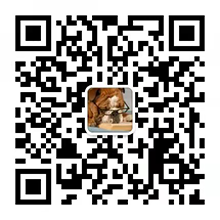一、英语倒装句的类型
1. 用于 there be 句型.
2. 用于“ here ( there, now, then )+不及物动词+主语”的句型中,或以 in, out, up, down, away 等副词开头的句子里,以表示强调.
注意:
(1)主语是代词时,主语和谓语不倒装.
(2) here , there 放在句首通常用一般现在时.
3. 当句首状语为表示地点的介词词组.
4. 表语置于句首时,倒装结构为“表语+连系动词+主语”:
(1)形容词+连系动词+主语
Present at the meeting were Mr Li, Mr Wang and many other teachers.
出席会议的有李老师、王老师和其他很多老师.
(2)过去分词+连系动词+主语
Gone are the days when we used foreign oil.
我们使用洋油的日子一去不复返了.
(3)介词短语+ be +主语
Among the goods are books, exercise-books, pens and some other things.
在所有的货物中有书、练习册、钢笔和其他东西.
5. 用于 so, neither , nor 开头的句子,表示重复前句的部分内容.原句的谓语应与前句的谓语的时态、形式相一致.
例如:You can&39;t speak French. Neither can she.
你不会说法语,她也不会.
6. 为了保持句子平衡,或为了强调表语或状语,或是上下文紧密衔接时.
例如: They arrived at a small village, in front of which was a big river.
他们来到一个小村庄,村庄前面是条大河.
二、全部倒装的情况
1.完全倒装即把整个谓语放到主语之前(是整个谓语动词,而非助动词)。
例如:The teacher came in and the class began.(没有倒装)
2.there引出的完全倒装句:除了最常见的there be句型以外,there还可以接appear,exist,lie,remain,seem to be,stand等,一般都译成“有”的含义,构成完全倒装句。
例如:There appeared to be a man in black in the distance.(远处有个穿黑色衣服的人。)
3.由地点和时间副词引出的完全倒装句:以地点副词here,there和时间副词now,then开头,后面的动词是be,come,exist,fall,follow,go,lie,remain,seem,stand(表移动或动态的不及物动词)等,而主语又是名词时,构成完全倒装句。
例如:Up climbed the boy when his mother came.
4.表示运动方向的副词或地点状语置于句首,谓语表示运动的动词且主语是名词时使用完全倒装。
5.在强调状语时,有以下情况:



